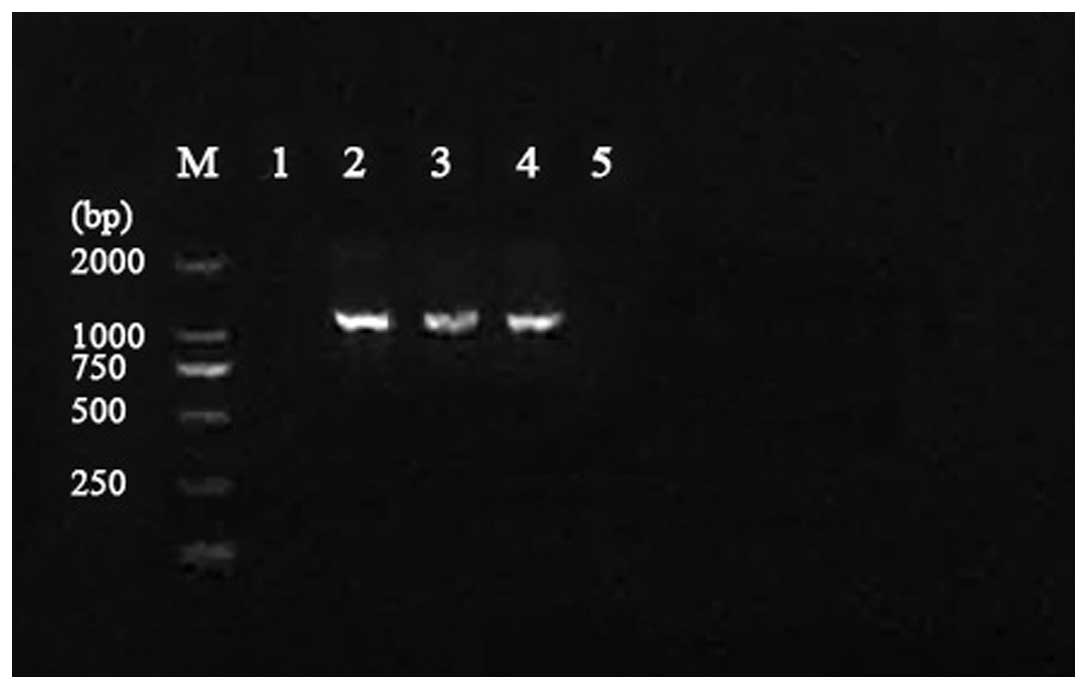|
1
|
Rahal JJ: Extended-spectrum
beta-lactamases: how big is the problem? Clin Microbiol Infect. 6
(Suppl 2):2–6. 2000. View Article : Google Scholar : PubMed/NCBI
|
|
2
|
Cohen ML: Epidemiology of drug resistance:
implications for a post-antimicrobial era. Science. 257:1050–1055.
1992. View Article : Google Scholar : PubMed/NCBI
|
|
3
|
Bradford PA: Extended-spectrum
beta-lactamases in the 21st century: characterization, epidemiology
and detection of this important resistance threat. Clin Microbiol
Rev. 14:933–951. 2001. View Article : Google Scholar : PubMed/NCBI
|
|
4
|
Gniadkowski M: Evolution and epidemiology
of extended-spectrum beta-lactamases (ESBLs) and ESBL-producing
microorganisms. Clin Microbiol Infect. 7:597–608. 2001. View Article : Google Scholar : PubMed/NCBI
|
|
5
|
Kliebe C, Nies BA, Meyer JF,
Tolxdorff-Neutzling RM and Wiedemann B: Evolution of plasmid-coded
resistance to broad-spectrum cephalosporins. Antimicrob Agents
Chemother. 28:302–307. 1985. View Article : Google Scholar : PubMed/NCBI
|
|
6
|
Knothe H, Shah P, Krcmery V, Antal M and
Mitsuhashi S: Transferable resistance to cefotaxime, cefoxitin,
cefamandole and cefuroxime in clinical isolates of Klebsiella
pneumoniae and Serratia marcescens. Infection. 11:315–317. 1983.
View Article : Google Scholar : PubMed/NCBI
|
|
7
|
Sirot D, Sirot J, Labia R, et al:
Transferable resistance to third-generation cephalosporins in
clinical isolates of Klebsiella pneumoniae: identification of
CTX-1, a novel beta-lactamase. J Antimicrob Chemother. 20:323–334.
1987. View Article : Google Scholar : PubMed/NCBI
|
|
8
|
Coudron PE, Moland ES and Sanders CC:
Occurrence and detection of extended-spectrum beta-lactamases in
members of the family Enterobacteriaceae at a veterans medical
center: seek and you may find. J Clin Microbiol. 35:2593–2597.
1997.PubMed/NCBI
|
|
9
|
Tzouvelekis LS and Bonomo RA: SHV-type
beta-lactamases. Curr Pharm Des. 5:847–864. 1999.PubMed/NCBI
|
|
10
|
Paterson DL, Hujer KM, Hujer AM, et al:
Extended-spectrum beta-lactamases in Klebsiella pneumoniae
bloodstream isolates from seven countries: dominance and widespread
prevalence of SHV- and CTX-M-type beta-lactamases. Antimicrob
Agents Chemother. 47:3554–3560. 2003. View Article : Google Scholar : PubMed/NCBI
|
|
11
|
Shaheen BW, Nayak R, Foley SL, et al:
Molecular characterization of resistance to extended-spectrum
cephalosporins in clinical Escherichia coli isolates from companion
animals in the United States. Antimicrob Agents Chemother.
55:5666–5675. 2011. View Article : Google Scholar : PubMed/NCBI
|
|
12
|
Livermore DM: Beta-lactamase-mediated
resistance and opportunities for its control. J Antimicrob
Chemother. 41 (Suppl D):25–41. 1998. View Article : Google Scholar : PubMed/NCBI
|
|
13
|
Jonathan N: Screening for
extended-spectrum beta-lactamase-producing pathogenic
enterobacteria in district general hospitals. J Clin Microbiol.
43:1488–1490. 2005. View Article : Google Scholar : PubMed/NCBI
|
|
14
|
Oteo J, Perez-Vazquez M and Campos J:
Extended-spectrum [beta]-lactamase producing Escherichia coli:
changing epidemiology and clinical impact. Curr Opin Infect Dis.
23:320–326. 2010. View Article : Google Scholar : PubMed/NCBI
|
|
15
|
Du Bois SK, Marriott MS and Amyes SG: TEM-
and SHV-derived extended-spectrum beta-lactamases: relationship
between selection, structure and function. J Antimicrob Chemother.
35:7–22. 1995. View Article : Google Scholar : PubMed/NCBI
|
|
16
|
Canton R and Coque TM: The CTX-M
beta-lactamase pandemic. Curr Opin Microbiol. 9:466–475. 2006.
View Article : Google Scholar : PubMed/NCBI
|
|
17
|
Jacoby GA: Epidemiology of
extended-spectrum beta-lactamases. Clin Infect Dis. 27:81–83. 1998.
View Article : Google Scholar : PubMed/NCBI
|
|
18
|
Dashti AA, Jadaon MM, Gomaa HH, Noronha B
and Udo EE: Transmission of a Klebsiella pneumoniae clone
harbouring genes for CTX-M-15-like and SHV-112 enzymes in a
neonatal intensive care unit of a Kuwaiti hospital. J Med
Microbiol. 59:687–692. 2010. View Article : Google Scholar : PubMed/NCBI
|
|
19
|
Pitout JD, Nordmann P, Laupland KB and
Poirel L: Emergence of Enterobacteriaceae producing
extended-spectrum beta-lactamases (ESBLs) in the community. J
Antimicrob Chemother. 56:52–59. 2005. View Article : Google Scholar : PubMed/NCBI
|
|
20
|
Huang SS, Lee MH and Leu HS: Bacteremia
due to extended-spectrum beta-lactamase-producing
Enterobacteriaceae other than Escherichia coli and Klebsiella. J
Microbiol Immunol Infect. 39:496–502. 2006.PubMed/NCBI
|
|
21
|
Huijbers PM, Graat EA, Haenen AP, et al:
Extended-spectrum and AmpC β-lactamase-producing Escherichia coli
in broilers and people living and/or working on broiler farms:
prevalence, risk factors and molecular characteristics. J
Antimicrob Chemother. 69:2669–2675. 2014. View Article : Google Scholar : PubMed/NCBI
|
|
22
|
Jain A, Roy I, Gupta MK, Kumar M and
Agarwal SK: Prevalence of extended-spectrum
beta-lactamase-producing Gram-negative bacteria in septicaemic
neonates in a tertiary care hospital. J Med Microbiol. 52:421–425.
2003. View Article : Google Scholar : PubMed/NCBI
|
|
23
|
Jacoby GA and Carreras I: Activities of
beta-lactam antibiotics against Escherichia coli strains producing
extended-spectrum beta-lactamases. Antimicrob Agents Chemother.
34:858–862. 1990. View Article : Google Scholar : PubMed/NCBI
|
|
24
|
Harada S, Ishii Y and Yamaguchi K:
Extended-spectrum beta-lactamases: implications for the clinical
laboratory and therapy. Korean J Lab Med. 28:401–412. 2008.
View Article : Google Scholar : PubMed/NCBI
|










